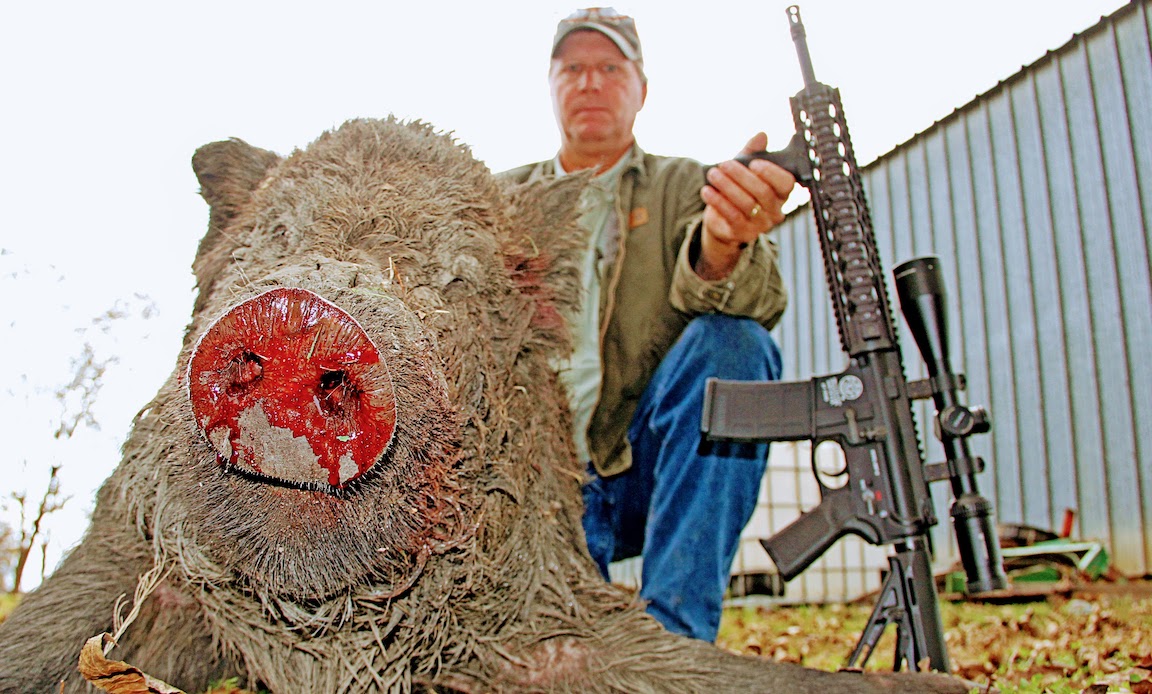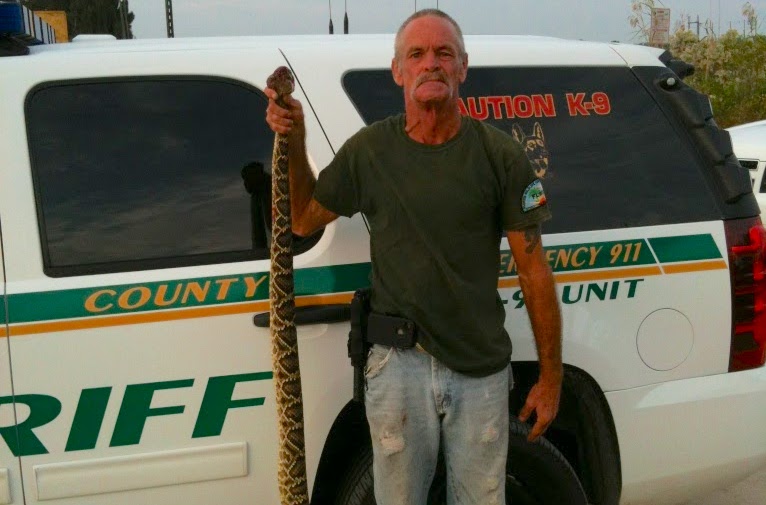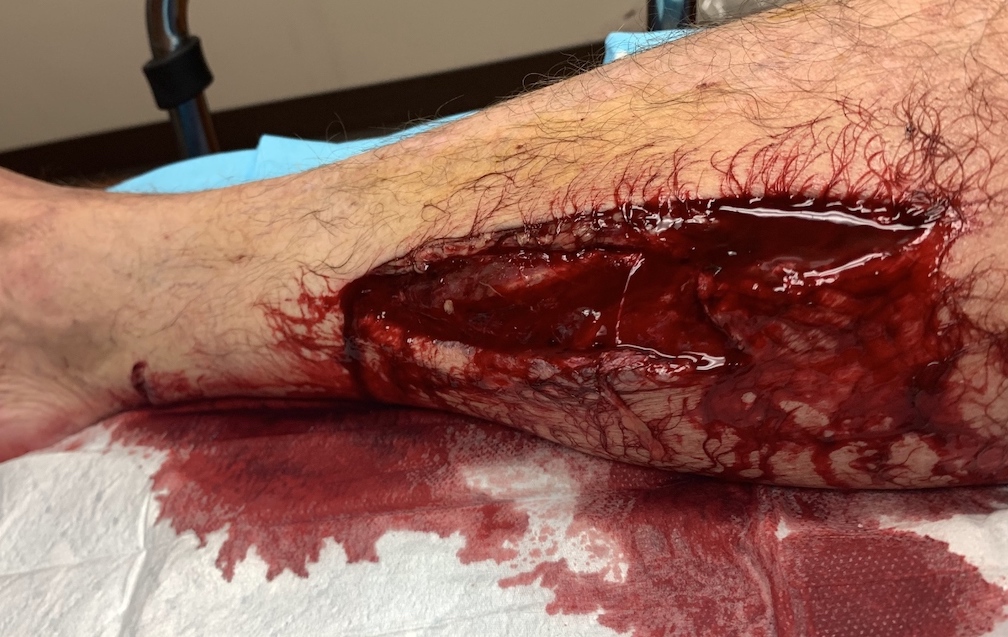Mississippi Hunter and Florida Trapper Survive Wild Pig Attacks

Face to snout with a wild pig, unarmed, and knocked to knees and elbows in a Mississippi river bottom, Monte Sullivan stared at death: “I figured I might be going to meet my maker. We were almost eye to eye, and I was a dead man if that’s what the pig wanted. People think they know all about pigs till they get one on’em.”
Likewise, just two years prior in Florida, while shielding two children from a potential wild pig attack, James Dean sustained horrific injuries that almost ended his life. “The pig moved so fast that I had no idea how bad or deep I was cut. I’ve been doing this for almost 30 years and wild pig numbers weren’t like this when I started.”
Sullivan’s freakish brush and Dean’s gruesome survival highlight the wild pig perils of an exploding population, increased human contact, and expansion into urban locales. “The public doesn’t realize what these animals are capable of,” Dean adds. “Unfortunately, you’re going to see more and more reports of people getting hurt in wild pig encounters.”
Mississippi: Still as a Stone
On Jan. 13, 2022, Monte Sullivan was primed for an afternoon deer hunt. On family bottomland in northeast Mississippi’s Clay County, adjacent to the Chuquatonchee Channel, Sullivan, 70, climbed a ladder stand, loaded a .270 Weatherby rifle, and waited on mature antlers. As evening approached, his stand was crossed by numerous young bucks—but nothing to trigger the interest of a long-in-the-tooth hunter.
At approximately 5:45 p.m., Sullivan unloaded his gun, descended the ladder in near-darkness, and began walking a trail by the light of a fat, full moon toward a GMC Sierra parked a mile distant. Moving quietly on sandy ground, Sullivan crossed along a neighbor’s 50’-x-100’ food plot and spotted four wild pigs rooting in rye and clover. “They were easy to see in the moonlight and maybe 75 yards away. All four went 300-pounds, easy.”
Sullivan kept going, easing down the west side of the food plot, walking parallel to the Chuquatonchee, roughly 20 yards off the bank. A quarter mile from his truck, he heard a soft rattle of brush over his left shoulder and tried to turn—too late. In a flash, he was airborne and steamrolled onto his stomach by a full sounder of wild pigs.
Sullivan had crossed a wash—essentially a trail leading from water to food plot—at the exact moment a sounder moved off the creek. The pigs clattered into his left side and knocked the rifle 5’ away into mud.
On the edge of consciousness, Sullivan pushed onto his elbows and knees, shook away the cobwebs, and took stock: Hand cut by hoof or tusk and shoulder throbbing.
“I was almost knocked out and I’m not exactly sure how long I was down, but I started to regain my senses and I finally looked up to see the most frightening site of my life.”
Injured, alone, unarmed, and exposed on all fours, Sullivan was eyeball-to-eyeball with a wild pig 4’ from his face. As still as a stone, the pig stared at Sullivan, not betraying a hint of intent.
“This pig was on me, just watching,” Sullivan describes. “I’m not gonna exaggerate and say it was 500 pounds, but I promise you it was about 300 pounds—plenty big. Sow or boar, I’m not positive, but I think it was a sow. It’s tough to explain how scared and shook I was, because that pig was deciding its next move and I knew that if she came in, I was going to die right there.”
Florida: Red on Black
James Dean is as tough as hickory. The legendary wildlife removal specialist in east-central Florida’s Brevard County has been mauled by countless critters, bitten by cottonmouths and rattlesnakes, and sustained a coral snake pop for good measure. All told, Dean’s body is a roadmap of scars obtained in encounters from rattlesnakes to pythons to possums to pit bulls.
Every year, Dean traps and removes 1,000-plus wild pigs, but in 2019, he endured the worst injuries of his 26-year career and barely survived a wild pig clash. In October, Dean received a phone call from a homeowner about a rogue boar in a residential neighborhood outside Melbourne. “I’d gotten pig calls from this neighborhood in the past, but this particular pig was especially aggressive and had threatened two little kids and some elderly people walking their dog.”
Wearing steel-toe boots, jeans, and a loose t-shirt with “State Wildlife Trapper” stamped on the back, Dean placed a box trap at the backside of the neighborhood and baited with a batch of sour corn soaked for five days in whiskey, sugar, and yeast. Within 24 hours, as expected, the trap’s guillotine door was triggered, and the boar was bagged.
“He was on the smaller side for a pig, probably just under 200 pounds or so. He had razor-sharp tusks on his bottom jaw that I’d estimate at 1.5 to 2 inches.”
“I did what I always do,” Dean continues. “I pulled my truck up and dropped a transport trap. It’s just a matter of getting on top of the two traps, lifting the doors, and running the pig through. Once he’s secured in the transport trap, I winch it into the back of the truck.”
As Dean mounted the traps, in mid-transfer of the boar, two young girls burst out the backdoor of the nearest house and startled the pig. “He lurched toward them and was squeezing out between the traps,” Dean recalls. “I didn’t have any choice because my only thought was to protect the kids.”
Dean jumped down in front of the boar, attempting to force the pig back into the trap. “I did everything I could to wrestle him away from the girls. All I can tell you is that God gave me the strength to push him back into the trap and shut the door, but that’s when he laid me open. Even though he was a smaller pig, I had no idea what all he’d done to me. His speed was impossible to explain; just so fast.”
The boar had torn through both of Dean’s calf muscles, sliced through one kneecap, exposed bone, chewed hunks out of his arms, doled out multiple head injuries, and cut into Dean’s feet—the steel-toe boots were mangled and later tossed in the trash.
Losing copious amounts of blood, Dean tried to crawl in his cab and drive for help. Instead, he lost consciousness. “I was covered in red and didn’t know it, because all I saw was black.”
Mississippi: “Don’t Want to Know”
Perched on all fours with a wild pig in spitting distance, Monte Sullivan bet all his chips. Posturing as much as circumstances would allow, Sullivan threw up his hands, hollered in alarm, and lunged at the hog. The sow pivoted and shot toward the food plot. “If I had done anything else, that pig was coming at me and I know it.”
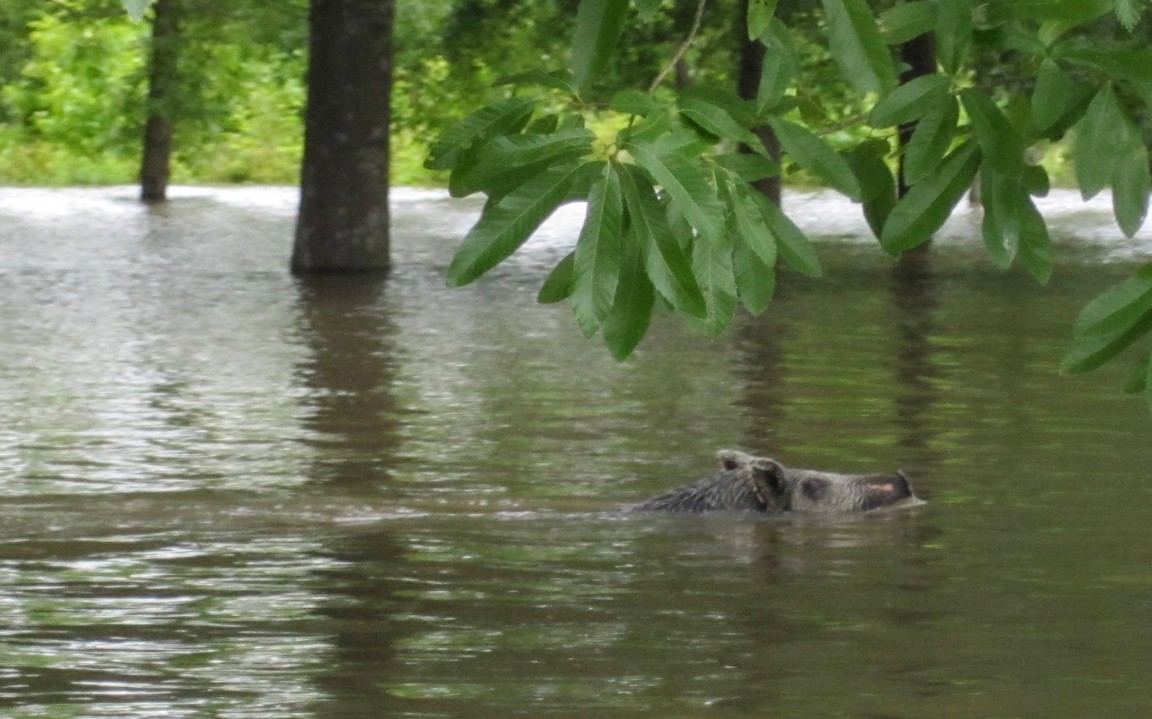
Sullivan stood, grabbed his rifle, and staggered down the trail, looking over his shoulder with every step. Reaching the truck, he wiped away blood and felt pain roll across his body as adrenaline effects waned. Recovery included shoulder surgery and seven months of therapy.
“I realize I got between the water and their food, and I paid the price. They probably had no idea I was there and hit me by accident, but once I was down on the ground, the situation changed. I’m not sure what that big sow looking at me was thinking of doing, and maybe I don’t want to know.”
The experience left Sullivan permanently rattled: “People don’t appreciate how fast these animals are until you see it up close. I’ll never forget it for even a second. Keep in mind, when I was a kid there were basically no hogs around, but now they are everywhere. Everywhere.”
Florida: Someone’s Gonna Get Killed
In and out of consciousness, Dean was in danger of bleeding out when his family, and subsequently an emergency crew, arrived on the scene after a homeowner called the sheriff’s office. Dean’s son, Christian, pulled his father from the truck and fastened a tourniquet as paramedics arrived. “I was still feeding off adrenaline and didn’t realize how bad I was hurt. There was so much blood—enough that I remember it dripping out the back of the ambulance onto the ground. I’d been put on aspirin two weeks before as a blood thinner, and that must have made my wounds bleed even worse.”
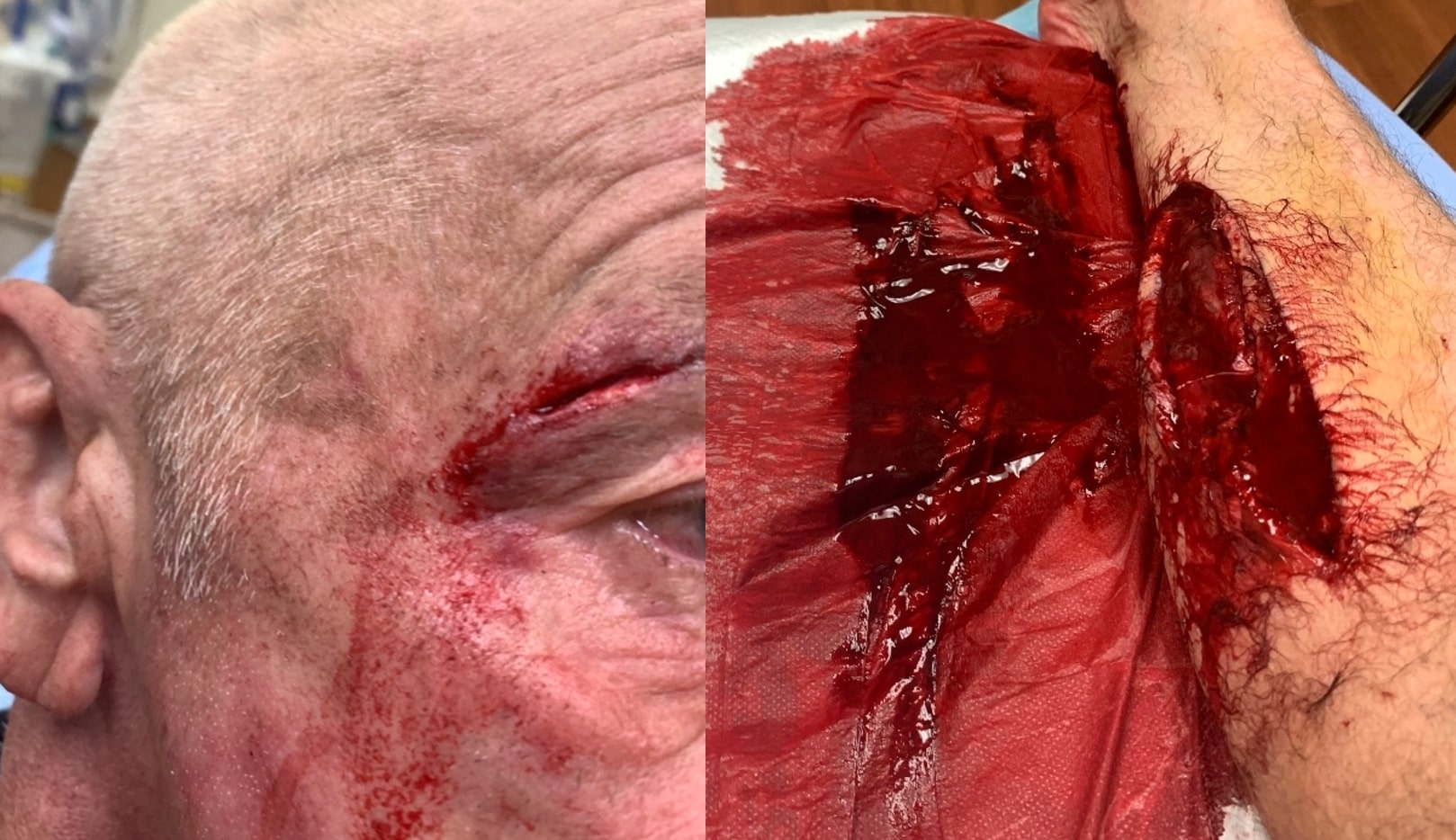
“He put those sharp tusks on me and opened holes everywhere,” Dean continues. “He bit and scratched me all over the place, but the real damage came from the tusks. The hospital trauma team was ready for me because they had worked on me before for other wildlife injuries and expected me to show up looking pretty bad.”
Three surgeries and multiple infections later, Dean climbed back in the saddle, once again trapping wild pigs. In 2022, along with a Noah’s Ark of other wildlife, he removed 1,600 wild pigs in Brevard County.
“Mentally, it’s made me more driven to protect kids and the public. I do a lot of media interviews from Animal Planet to CNN to Fox and I just try to educate people because the wild pig problem is getting worse. The agriculture damage by wild pigs is crazy and I feel sorry for farmers around here, but someone’s gonna get killed.”
Worse and Worse
The concerns of Dean and Sullivan are merited when considering the research of one of the foremost wild pig experts in the world, John J. Mayer, who has examined 20,000 specimens spanning 50 years of research.
Mayer, a technical program manager at the Savannah River National Laboratory in Aiken, S.C., published Wild Pig Attacks on Humans in 2013. He noted a total of 412 attacks on at least 665 humans in 47 countries and 21 U.S. states from 1825-2012. Significantly, 70% of recorded attacks occurred between 2000 and 2012.
According to Mayer, at least four fatal wild pig attacks have been recorded in U.S. history. (Mayer currently is preparing an updated study on human fatalities from wild pig encounters.) Wild pigs typically avoid human presence, but as population numbers continue to climb, the potential for human interaction increases in tandem.
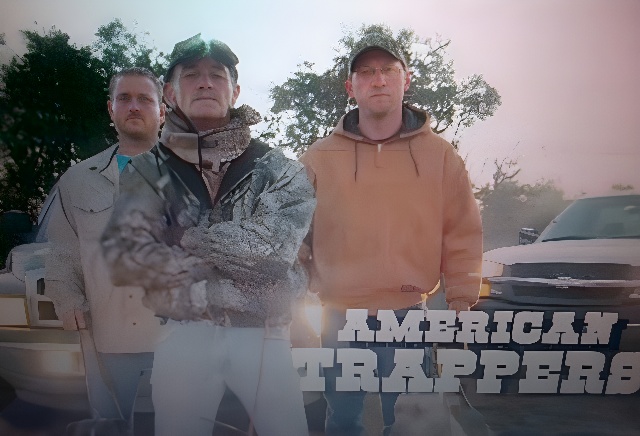
The current U.S. wild pig population stands at approximately 6.9 million, a particularly alarming number considering the U.S was home to a far lower total of wild pigs—2.4 million—in 1982.
“When I started in wildlife removal, pig numbers were nowhere near what we’re seeing today,” Dean concludes. “The public needs to be aware of what is happening.”
“For the rest of my life, I’ll never go across any land that has pigs without a loaded gun,” Sullivan echoes. “This is going to get worse and worse.”
For more from Chris Bennett (cbennett@farmjournal.com 662-592-1106) see:
While America Slept, China Stole the Farm
Priceless Pistol Found After Decades Lost in Farmhouse Attic
Cottonmouth Farmer: The Insane Tale of a Buck-Wild Scheme to Corner the Snake Venom Market
Tractorcade: How an Epic Convoy and Legendary Farmer Army Shook Washington, D.C.


